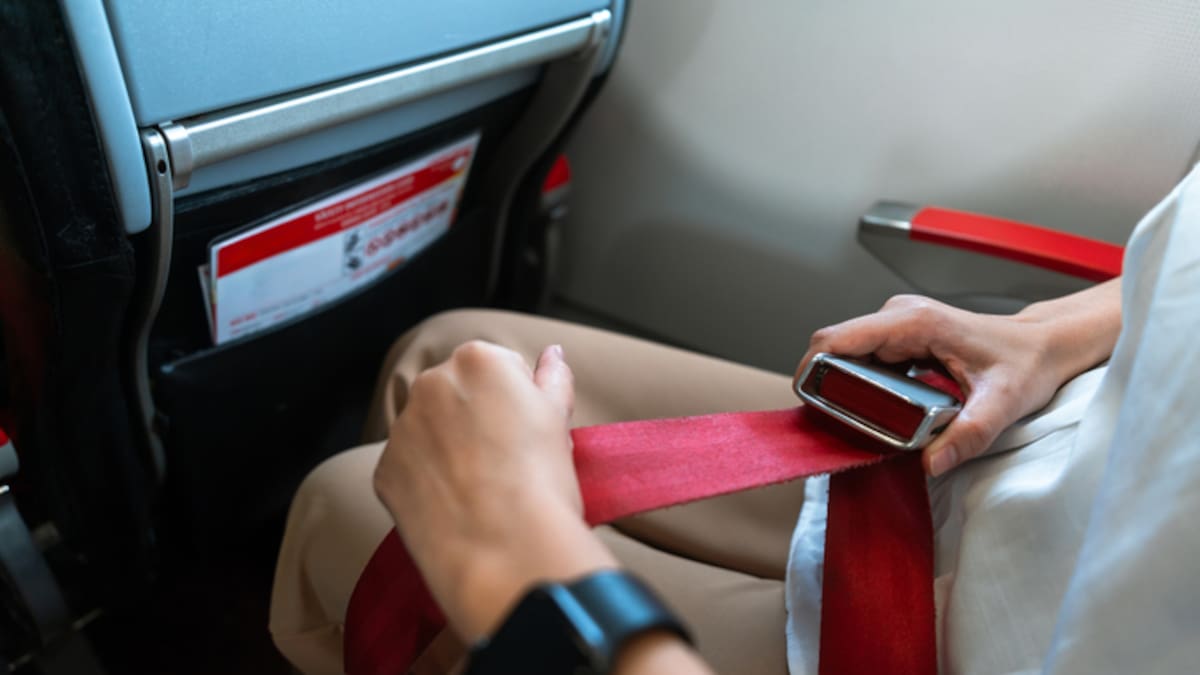An aviation expert says it is not necessary to wear a seatbelt tightly. Even a loose belt offers better protection than none at all. Photo / Getty Images
It might be time to forgo a little comfort and buckle up for longer.
Airlines are set to implement stricter seatbelt regulations after one death and multiple injuries when severe turbulence struck a flight from London to Singapore.
Singapore Airlines flight SQ321 dropped 6000ft (about 1800 metres) in three minutes on May 21.
Geoffrey Kitchen, 73, from Gloucestershire, reportedly suffered a heart attack and died during the flight.
The plane, with 211 passengers and 18 crew, made an emergency landing in Bangkok.
It is unclear whether Kitchen or the 26 injured passengers were wearing seatbelts during the turbulence. However, the incident has reopened the conversation about safety rules and seatbelt regulations during a flight.
Read more: Fatal Singapore Airlines flight turbulence: Experts reveal one thing passengers need to do
Hundreds of images from the flight were posted by passengers to social media platforms, sparking discussion on aviation threads.
Airlines have been forced to re-evaluate their safety protocols, and talk of stricter seatbelt rules soon came into play, with some experts suggesting passengers should keep their seatbelts fastened throughout their flights.
Pilots and travel safety experts have often advised this, suggesting that passengers should unlock their seatbelts only when getting up to use the bathroom. In the wake of other recent episodes of severe turbulence, that might soon become mandatory.
An aviation insider told The Times: “The messaging is going to be massively strengthened: it’ll be ‘Stay strapped in at all times’. End of.”
David Learmount, a former RAF pilot and aviation expert, emphasised in an interview with The Sun that the incident highlighted the need for constant vigilance.
“Now the indication there is that the crew didn’t know this turbulence was coming, or they weren’t expecting it to be anything like it actually turned out to be.
“So everybody on the aircraft was relatively unprepared, and that’s dangerous,” he said.
He reiterated that passengers did not have to wear seatbelts tightly. Even wearing one loosely could provide better protection than no belt at all.
“It might be uncomfortable, but it will keep you from being thrown into the ceiling.”

After the May 21 incident, Singapore Airlines moved quickly to update its safety guidelines, adopting a more cautious approach to turbulence.
Cabin crew will no longer serve hot drinks and meals while the seatbelt sign is on.
The airline promises to continue improving its services to ensure a safer flight for everyone. “We will continue to review our processes as the safety of our passengers and crew is of utmost importance.”

